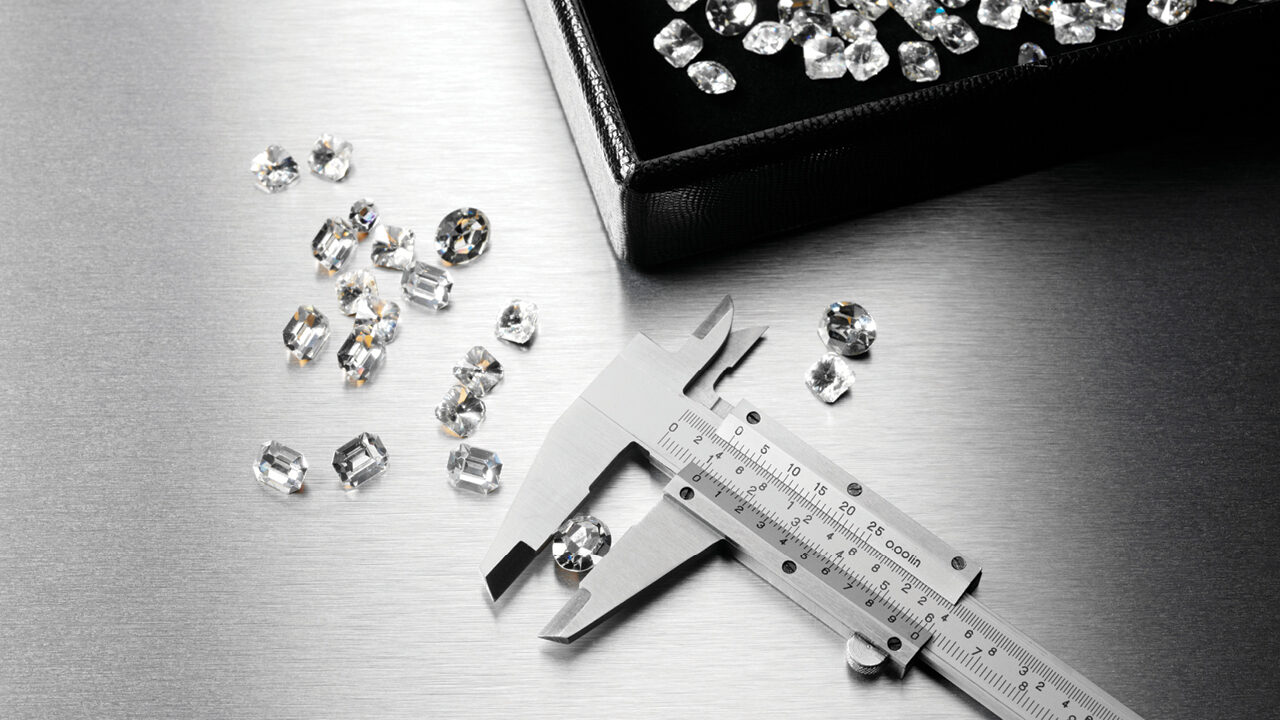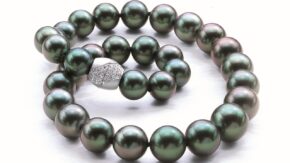If you want to stay at the leading edge of the industry, educating yourself in these five areas is a must.
- Customer interest
Consumers go to their local jeweler expecting expert advice on what to purchase. But a salesperson who had that expertise 20 years ago might not offer what shoppers want today. One of the roles of continuing education is to ensure salespeople are up to date on both the facts of the trade and the attitudes of modern customers.
Keeping up those skills can strike a chord with clients and encourage them not just to buy a diamond, but to tell others about the great in-store experience they’ve had with you.
“Education is one of the ways you can stay up there and keep delivering those customer expectations, because fundamentally, you want that person coming back, you want them sharing your name with their friends and family,” says Jodine Perrin, director of education and training at De Beers’ International Institute of Diamond Grading and Research (IIDGR). “You want a brand advocate out there.”
This can be through formal education, or simply reading media articles and research papers, Perrin notes. “The last thing you want is to miss something that the retailer next door doesn’t miss, because that’s a competitive advantage.”
- Detecting synthetics
The ability to detect synthetic diamonds reliably is critical for anyone in the industry. Professionals with poor understanding of the topic can suffer commercially if it means they’re not sufficiently vigilant about identifying and disclosing laboratory-grown stones.
“Companies must ensure they have a well-trained person operating their detection machines,” advises Colin McGuinness, a research scientist at De Beers Technologies. “They are scientific instruments — you do need some knowledge or some training to get the most out of them. The biggest pitfall is purchasing an instrument and not knowing how it works, or thinking it will do everything for you.”
For instance, if someone doesn’t know the difference between High Pressure- High Temperature (HPHT) and chemical vapor deposition (CVD) — the two main methods of growing diamonds in a lab — he or she might buy a machine that only detects HPHT diamonds and wrongly assume the device will spot CVD as well.
That could have dire consequences if it ends up missing a synthetic gem. That’s a legitimate concern, since, as McGuinness notes, most people know the difference between synthetic diamonds and simulants (such as cubic zirconia), but many still think HPHT and CVD are the same thing.
- Understanding grading
It’s a given that a diamantaire knows the difference between flawless and internally flawless, but a more detailed knowledge of how graders put together diamond reports is necessary if one wants to keep up with changes in the market.
Gemological laboratories are increasingly looking toward automated ways of assessing diamonds, potentially changing the grading landscape entirely.
A jeweler who thinks grading will always work like it did decades ago is in serious need of education.
“Courses have their place, especially if they include hands-on operational experience of the new technologies,” says Tzafrir Engelhard, vice president of business development at Sarine Technologies, which manufactures grading equipment.
“After training on new grading systems, users are better positioned to explain to consumers how transparent, accurate and consistent grading is becoming,” he continues, adding that understanding the technical aspects of grading also enables retailers to advocate for diamonds as a category.
So does other knowledge, such as “how to explain the diamond’s unique story and value to the consumer.
Retailers should focus on gaining and imparting knowledge about the diamond’s individual story, and how it differentiates the diamond from other luxury goods on the market.”
WHO’S WORKING WHERE
- The diamond industry supports about 10 million people worldwide, according to the World Diamond Council (WDC). A large proportion of these are in India, where the Gem & Jewellery Export Promotion Council (GJEPC) says more than 4.5 million work in the gem and jewelry trade.
- Alrosa, the world’s largest diamond miner by volume, had 27,556 employees at the end of 2016 — the vast majority of them in Siberia’s Yakutia region — while De Beers, the biggest miner by sales value, boasts more than 20,000 people in its ranks.
- In total, the seven members of the Diamond Producers Association (DPA) directly employ more than 75,000 people, including long-term contractors, the group says.
- The US trade is smaller and, it seems, shrinking. Total employment in jewelry, luggage and leather-goods stores will decline to an estimated 128,800 people by 2026, from 137,200 in 2016, according to projections by the US Bureau of Labor Statistics. Jobs in retail for those sectors will fall 5% to 66,000 from about 90,000, the government office says. This reflects a contraction of the US jewelry trade: The number of businesses in operation across the country dropped 4% during 2017, totaling 26,031 at the end of the year, according to data from the Jewelers Board of Trade (JBT).
- Legal considerations
Jewelers can benefit from staying abreast of regulatory developments and knowing their legal obligations, according to Tiffany Stevens, CEO and president of the Jewelers Vigilance Committee. “It’s surprising to most people how much regulation there is in the jewelry industry,” says Stevens, whose organization advises the trade on its legal needs. “You never know what’s going to change next.”
For example, the US Securities and Exchange Commission said last year it wouldn’t enforce government rules regarding conflict minerals, even though the law remained in effect. Industry members needed advice on how to interpret this move, Stevens recalls.
Formal training aside, one of the simple things jewelers can do is set up Google alerts to ensure developments that appear on the internet make it into their inboxes, she suggests. She also recommends learning to make best use of intellectual-property rights.
Knowing how to search for existing trademarks, so you don’t register yours only to find out someone else has a similar one, takes training, but it can help prevent troublesome and costly conflicts.
“We’ve seen businesses…arm themselves with that ability to trademark products more quickly and efficiently, without having to go back and get tangled up with problems,” Stevens says.
- Finance
An employee’s job is to make good decisions for the company. That’s why every worker must understand what earns money for the business, explains Annie Doresca, chief financial officer at trade body Jewelers of America (JA).
“I strongly believe that employees should not only review their company’s annual financial audit, but most importantly, understand how their company is performing financially,” she says. “Having employees brush up on their financial comprehension will allow them to be more competent in their role.”
Perhaps the best way of improving this skill is through formal courses, especially for people without a financial background, she suggests. Knowledge of corporate finance, in particular, helps people understand how to pay for inventory they buy.
“Corporate finance also addresses budgeting, financial statements, and working capital — all important areas [for] the jewelry industry,” Doresca notes.
“All decisions that an employee makes have a fiscal impact on the company they work for,” she stresses. “In order to make the right decision, you need to have a basic understanding of finance.”
Image: iStock photo




